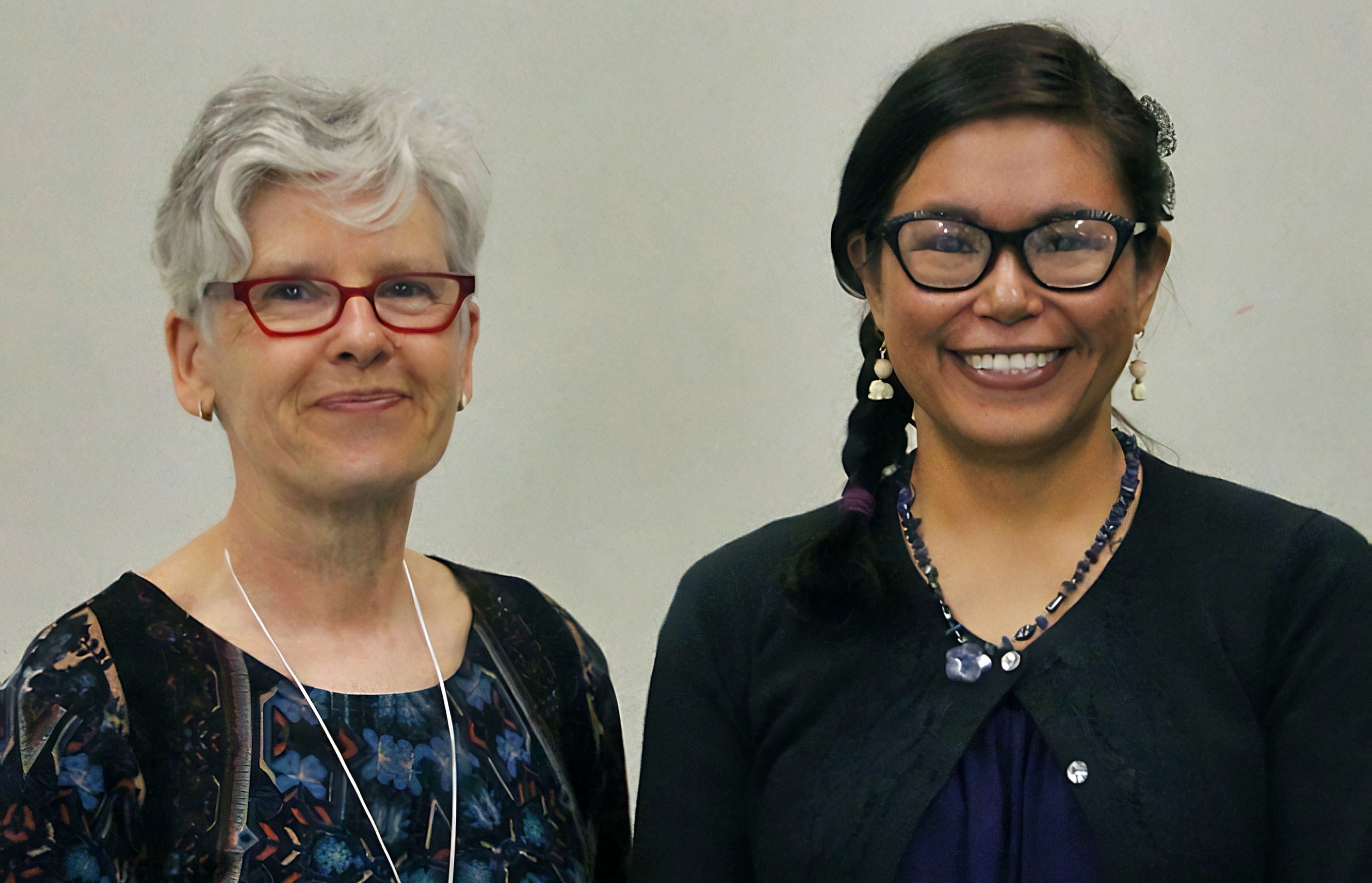Healthy aging is all about balance for older Nehiyawak/Plains Cree women in Maskwacîs, Alberta, according to recently published community-based participatory research based on sharing circles.
“It is important to have balance and equilibrium in our life,” said one sharing circle participant. “The body cries out if you don’t have balance and you start to experience sickness and you will not be fully able to provide support to your family members. Be mindful and present to see when the balance in your life is off.
“It’s important to address all aspects of wellness daily in order to age healthy and well: spiritually, emotionally, mentally, and physically.”
Thirty-six seniors — mostly women and a few men — participated in the sharing circles, led by a research team from Maskwacîs Health Services, the University of Alberta and the University of Calgary, under the guidance of a Women Elders Advisory Committee in 2017. The project was funded by the Canadian Institutes of Health Research.
“Women elders are the fire keepers of the home. They help the generations before and after them, like a touchstone for the family, helping to keep them together and sharing traditions,” says Luwana Listener, the community research co-ordinator for the project, who also lives in Maskwacîs.
“The Elders are such a valuable resource and blessing to the community because every single one of them has their own expertise and gifts to share with the community.”
The sharing circles were held in three locations within the four nations that make up Maskwacîs — Ermineskin Cree Nation, Louis Bull Tribe, Montana First Nation and Samson Cree First Nation — as well as in the nearby community of Pigeon Lake.
“Everybody had a chance to talk and they were really wide-ranging discussions,” notes Sue Ross, former Cavarzan Chair in Women’s Health Research and professor emeritus in obstetrics and gynecology.
“It was a privilege to be there just to listen to other people’s experiences.”
The first Maskwacîs project was about the women’s experience of menopause but the research team soon realized the women had much more valuable knowledge to share about how to age well.
At first some were reluctant to participate in the sharing circles because of the history of unethical medical research within Indigenous communities, Listener says, while others felt aging was a taboo subject.
“People were hesitant to talk at first but when we offered the sharing circles, it changed that perspective, knowing that research doesn’t have to be harmful. It can be strength-based. It can be meaningful and beneficial for the entire community,” Listener says.
Each event began with a quote from Ojibway-Anishinaabe Elder Jim Dumont: “Wellness from an Indigenous perspective is a whole and healthy person expressed through a sense of balance of body, mind, emotion, and spirit. Central to wellness is belief in one’s connection to language, land, beings of creation, and ancestry, supported by a caring family and environment.”
Using the four aspects of the Medicine Wheel as a framework to guide the sessions, the participants identified four key strategies they used to age well:
- Physical — keeping active to remain well
- Mental — learning new skills to nourish your mind
- Emotional — laughing, crying and being happy
- Spiritual — practising Nehiyawak traditional ways
These results were shared through community meetings, and a booklet with historic photographs is in the works.
Participants expressed fears about losing their mobility and hearing, or developing dementia as they aged, but they also described how they turned negative experiences into positive ones by using these strategies. For example, one woman reported sometimes not being able to move when she wakes up in the morning. She gives thanks to the Creator for giving her her body, and then all of a sudden her pain is gone and she's able to move around, Listener remembers.
All of the women feel a responsibility to pass along their knowledge and advice to younger family members as part of healthy aging.
“Even if they don't live with their grandchildren, they provide a huge amount of support and they get a lot of personal satisfaction from being able to help,” notes Ross, who is a member of the Women and Children’s Health Research Institute (WCHRI).
Listener, a WCHRI affiliate member, says she is grateful the women have also chosen to share their wisdom with the greater community through this research project.
“They’ve given me this path to follow so that I will be able to be a successful elder in my community when I reach that age,” she says. “I now have all of these wonderful strategies that all these people shared. It’s just a blessing to me.”
The Cavarzan Chair in Women’s Health Research was supported by the Alberta Women’s Health Foundation through WCHRI.
